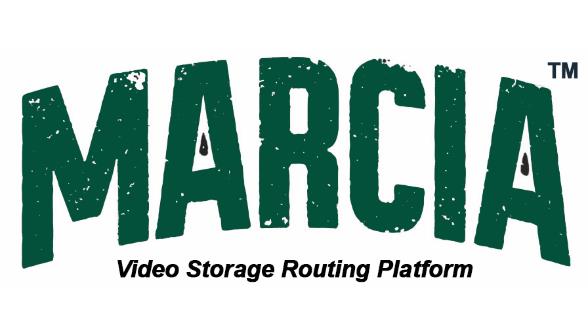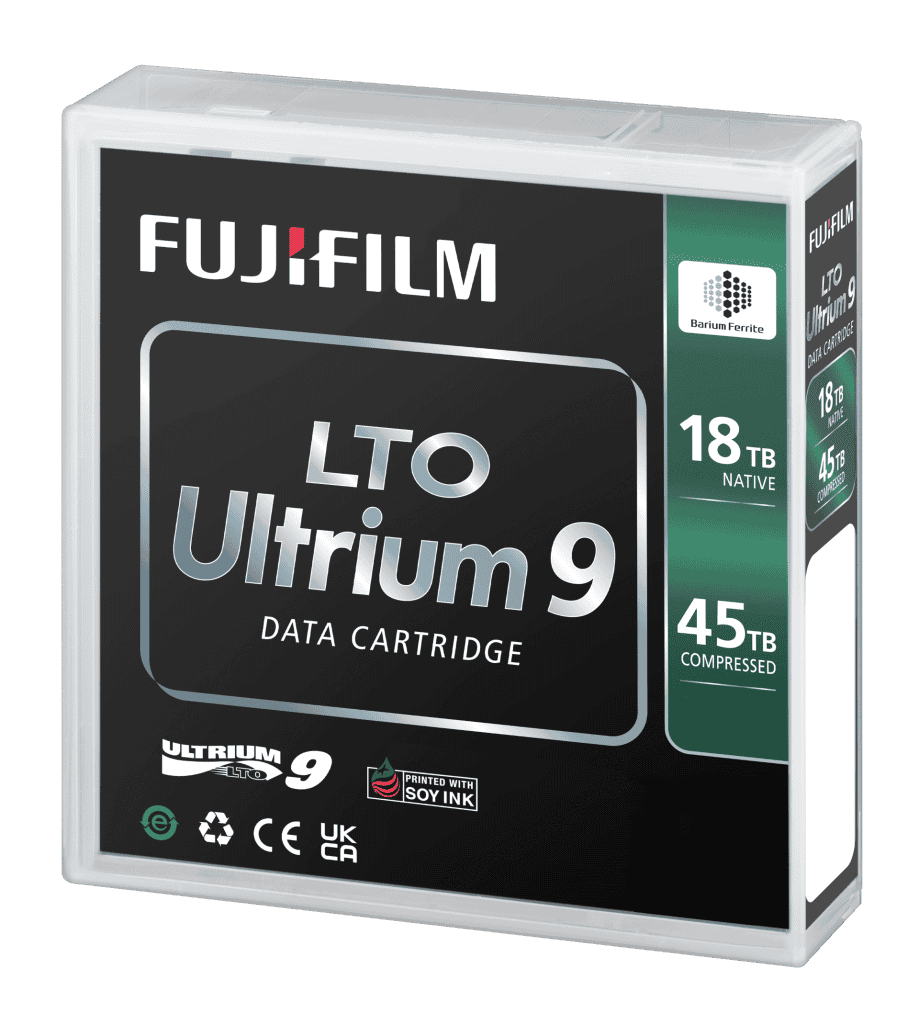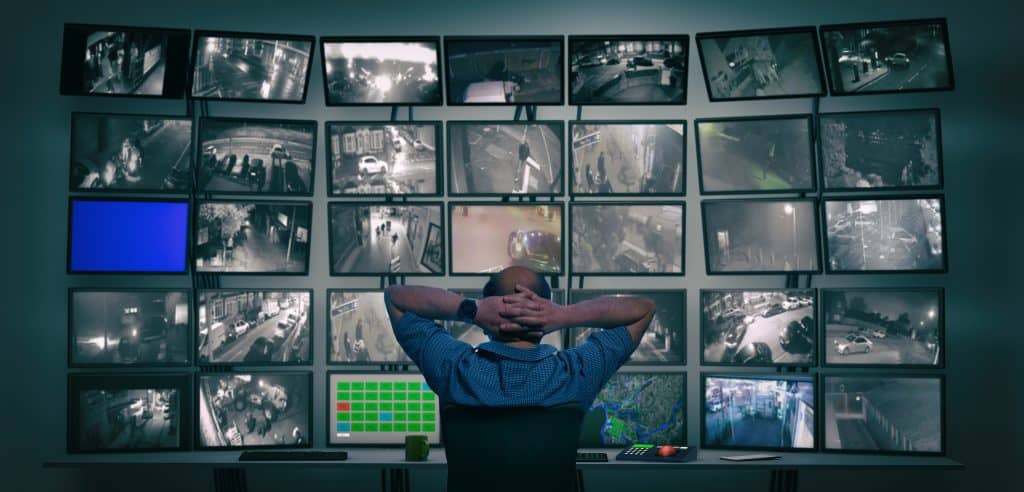Why LTO Data Tape is a Perfect Fit for the Massive Video Surveillance Market

Executive Q & A with Jay Jason Bartlett, CEO, Cozaint
Q1: Welcome Jay to this Fujifilm Insights Executive Q & A! Please tell us a bit about your role and responsibility as CEO of Cozaint.

Ans: Thanks Rich for the invite. I head up a great team of engineers and professionals that have a ton of experience with intelligent surveillance solutions, product development, data storage, and physical security. I’m fortunate to drive the efforts of Cozaint and help this team deliver a market disruptive video surveillance storage solution.
Q2: So, you are pioneering the use of today’s modern LTO data tape for video surveillance content retention. Wasn’t tape the defacto standard before HDDs took over?
Ans: Well, VHS tape was indeed the defacto storage media back in the analog days of video surveillance, say before 2012, when it largely became the domain of HDDs However, we are pushing an innovative new use of LTO data tape media within the video surveillance market to address today’s pain points of high cost and energy intensive HDDs.
Cozaint has a patent-pending on implementing LTO data tape storage in a video surveillance infrastructure in such a way that the video management software (VMS) is able to recall and playback -all- recorded video, without any extra steps or IT personnel needed.
And yes, we do believe this is a ground-breaking approach to utilize VMS aware LTO data tape in the video surveillance market.
Q3: What is different about today’s market compared to 2016 when LTO was tried in the VS market?
Ans:
Because so many managers and executives at organizations with responsibility of the physical security / video surveillance infrastructure have been around for a while, when the word ‘tape’ storage is used, modern LTO-9 data tape technology gets confused with old-fashion analog VHS tape storage.

And with the advances in LTO technology, today with LTO-9 digital data tape having a capacity of 18-Terabytes on a single cartridge, the ability to record, store, and manage large amounts of video data on inexpensive and eco-friendly LTO data cartridges is a significant advancement. It solves for higher resolution cameras and longer retention periods for things like AI analytics.
In years past, vendors did try to use LTO in the video surveillance market and some do today but purely for very long-term archive. However, those IT professionals didn’t really have an in-depth understanding of how video needed to be available for easy playback, more of a warm active archive rather than a cold archive use case. Therefore, the implementations were more IT centric instead of video surveillance operations centric. Unfortunately, those prior attempts to use LTO were met with resistance by the users and operators of those VMS systems. They really needed seamless performance when pulling content from an HDD tier or a tape tier.
Another huge difference from 2016 video storage and today’s systems is how ESG or “green” solutions are more important. How much a video storage system eats up in energy costs and cooling costs and management costs has skyrocketed. This is yet another advantage for LTO as there is absolutely no ‘greener’ storage media than LTO. The TCO costs savings should make anyone give such an LTO solution a long serious look.
Q4: You said LTO tape must be VMS aware, what does that mean?
Ans:
Cozaint has learned from those previous attempts to utilize LTO that the center of the universe of any video surveillance infrastructure is the video management software (VMS). Meaning, that the user / operator of the VMS that is needing to recall and playback recorded video, needs to do so directly and easily via the VMS software ‘timeline’ feature.
This timeline is where the VMS operator will scroll back and forth (some call it scrubbing the timeline) to search for the event of interest within the recorded video.
Unlike other systems, such as video editing tools in the media and entertainment industry, the VMS operator really does not know what or where they are looking. They have a general idea, but need to bounce around the VMS timeline to find the event.
This timeline scrubbing creates a specific challenge for video storage when attempting to implement LTO storage. The VMS and the underlying infrastructure need to be flexible enough, yet sophisticated enough, to know where the video of interest could be stored on a number of LTO tapes and then be able to quickly load and seek the video.
This is where LTO storage libraries come into focus within such an infrastructure. With multiple LTO drives available in various size LTO libraries, with LTO cartridge ‘slots’ within such a library (think of a classic record jukebox), the ability to quickly find the needed video is significantly faster.

This LTO library with multiple LTO drive capabilities delivers a level of scalability that is just not affordable in a hard-disk only video storage system.
And this scalability is what provides for a dramatically lower cost to store video with LTO.
Q5: Tell us about Marcia and how is it a breakthrough enabler for LTO to work in the VS industry?
Ans:
Cozaint’s MARCIA™ middleware software sits behind any file-based VMS system and manages a multiple tier storage infrastructure, for example HDD + LTO. Again, with years of understanding how video surveillance storage is managed, we have learned that the ideal set-up is a two-tier storage approach.

The first tier of storage is hard-disk based to allow the VMS operator to recall and playback their most recent recorded video. The customer / organization can determine the retention period they need for their operations with, let’s call it instant gratification in video playback, tier 1 and then all the video recordings being held on tier 2 consisting of LTO scalable storage.
A large expense/cost of a video surveillance infrastructure is in the hard-disk storage portion of the overall solution. Even though hard drives seem “cheap” – when you start needing more than a couple hundred terabytes of video storage, the hard disk storage becomes expensive quickly. Not to mention power and cooling.
Therefore, when we create a 2-tier video storage solution with minimal hard disk storage and scalable LTO storage, we can deliver a significantly more affordable system.
MARCIA is the middleware that manages all of this multi-tier storage so that the VMS operator does not need to think about where any of their video is recorded and stored. MARCIA keeps track of what is on tier 1 and tier 2 and quickly loads and plays the video the operator is requesting. And as the operator ‘bounces around the timeline’ MARCIA is able to deliver the requested video either instantly as in a typical solution or within just a couple of minutes if the video is located on LTO.
What this really delivers for the organization is better outcomes for the overall usage of the recorded video surveillance. If you think about why you are doing the video recordings in the first place, being able to quickly and easily recall and playback video is important.
More important is the quality of that recorded video. As soon as the industry moved from those analog VHS tapes, the hard-disk based video storage vendors have been coercing compromises in the video quality to make up for the expensive costs of hard disk storage.
Motion-only based recordings; low-frame rate recordings; low-resolution recordings even from very high-resolution cameras. All of these “normal” practices in video surveillance recording are being compromised because of the expense of hard-disk based storage systems.
It’s actually quite amazing how users have just become desensitized to these poor-quality compromises.
Q6: Any idea how much HDD capacity is shipped into the global market just for VS data retention?
Ans:
According to IDC, the capacity shipments of HDD into video surveillance applications in 2021 were 111 Exabytes, about 8.0% of total HDD shipments, followed by 79 EB or 7% in 2022 and estimated at 100 EB or about 7.5% in 2023.
By comparison, LTO capacity shipments in 2023 were 153 EB with 2.5X compression, so maybe 65 EB native? Therefore, the HDD market just for VS applications is larger than the entire LTO market.
That’s a lot of video data. And we want to help organizations record, store, and manage that video in the most cost-efficient way possible. While making it easy to playback at the same time. I think we have solved that issue.
Q7: Where can readers find more information about your solutions?
Ans: Sure, just go to www.cozaint.com and also check out the VS TCO calculator comparing the cost of VS retention with and without LTO at: www.bradjohnsconsulting.com/vs-tco
Q8: Finally, when you are not slaving away for Cozaint, what do you enjoy doing in your free time?
Ans:
It’s hard to believe we have been building Cozaint for over six years now and in the video surveillance industry since 2008. I’m obviously older now and my joy of being on a basketball court or out on the water on a sailboat has been replaced with three wonderful adult children and their spouses and now four adorable grandchildren. There really is nothing better than being “Papa.”
Thanks for your time Jay, and we wish you a lot of success with your software and getting LTO seeded in the Video Surveillance market!



 Storage industry analysts are saying that 2023 will be remembered for its historic downturn in demand. This may be so, due to hyperscaler digestion of previous year’s capacity shipments. But a few things remain constant, such as the
Storage industry analysts are saying that 2023 will be remembered for its historic downturn in demand. This may be so, due to hyperscaler digestion of previous year’s capacity shipments. But a few things remain constant, such as the 
 As both an active archive and tape evangelist, I’m excited to share how
As both an active archive and tape evangelist, I’m excited to share how  Video surveillance has become an essential tool in many industries, from law enforcement to retail, transportation, and critical infrastructure. The ability to capture and analyze video footage has enabled organizations to enhance their security, prevent crimes, optimize operations, and make data-driven decisions.
Video surveillance has become an essential tool in many industries, from law enforcement to retail, transportation, and critical infrastructure. The ability to capture and analyze video footage has enabled organizations to enhance their security, prevent crimes, optimize operations, and make data-driven decisions. I attended the International Security Conference West (ISC West) in Las Vegas last week. The show was well attended with some 20,000 visitors packing the aisles and mobbing the booths of some 650 vendors. The show covers everything from video surveillance to computer and communications security, to physical plant security, loss prevention, and more.
I attended the International Security Conference West (ISC West) in Las Vegas last week. The show was well attended with some 20,000 visitors packing the aisles and mobbing the booths of some 650 vendors. The show covers everything from video surveillance to computer and communications security, to physical plant security, loss prevention, and more. 




